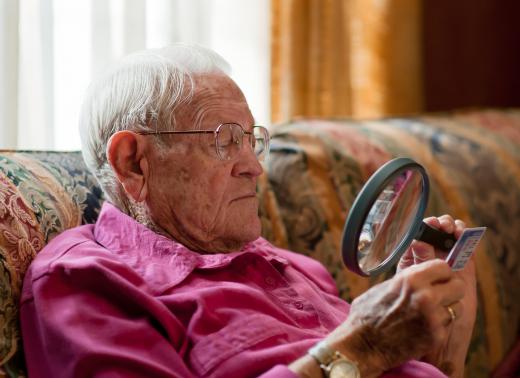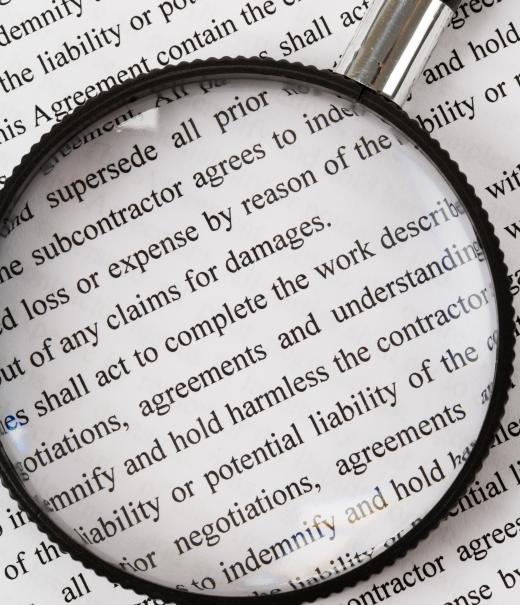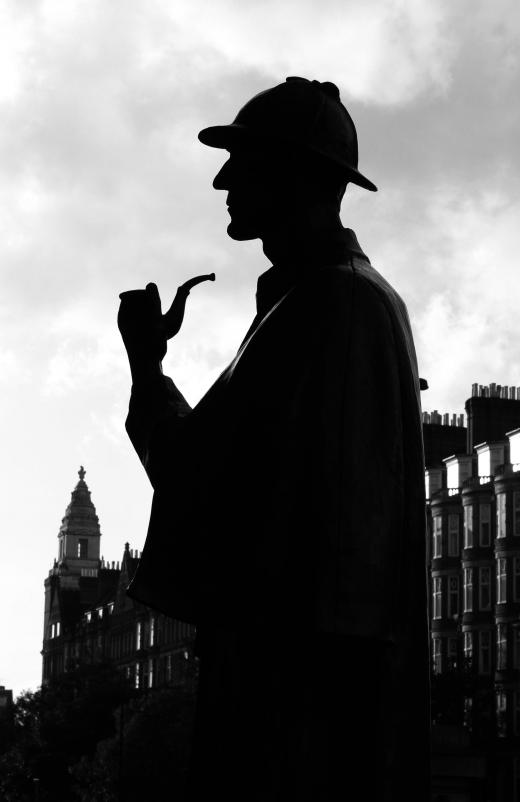How does a Magnifying Glass Work?
A magnifying glass is simply a convex lens meant to be held up to an object to see it magnified. It is a very simple form of microscope, and its invention allowed many later breakthroughs in optics to occur. The magnifying glass is most notably seen in mystery fiction, and is iconically associated with the fictional character Sherlock Holmes, who used one to study the scene of a crime in order to locate clues.
The earliest magnifying glass recorded was created by the master scientist Alhazen in 1021. He published a comprehensive work, The Book of Optics, which laid out many principles of optics and many interesting devices. One of these was described as "a magnifying device, a convex lens forming a magnified image." This basic invention went on to inspire many others, including the microscope, which helped revolutionize the fields of biology and chemistry.

The magnification of a glass is determined by the optical power of the lens and the distance it is held from the object being viewed and from the eye. A typical one would be labeled as a 2X magnifier, implying that the size of objects viewed is doubled, although this is likely to be better than most average users would achieve. On the other hand, someone with relatively poor eyesight could use such a tool to achieve an even higher relative magnification.

Although some people think that a magnifying glass is cutting off the area being viewed, in reality, the area covered by the glass is the area shown. Unlike a straight viewing, however, some areas are much larger than they would be with the naked eye, while others are much smaller. Each point viewed under the lens has its own ideal focal distance, which is why most people will move the glass closer and further from the object being viewed to find the ideal distance.

The best way to think about how a magnifying glass works is to imagine it in a two-dimensional situation first. If a person imagines something underneath the glass, like a ladybug, he can then imagine two lines coming up from either side of the insect into the air. Under a normal piece of glass, those lines would just travel straight and never meet, and the viewer would see both points of the ladybug relative to where they actually are. With a magnifying glass, however, the light is bent such that the two invisible lines eventually meet in the air. An ideal distance has that point right at the eye.

After these two imaginary lines meet, they will cross and pass each other in the opposite direction. This is why at an extremely close distance, an object under the lens may appear to be upside down. The light has just kept moving, but has flipped its orientation as it is viewed.
AS FEATURED ON:
AS FEATURED ON:














Discussion Comments
@ankara: I think a virtual magnifying glass is much easier to understand than a real one. Here's how a virtual magnifying glass works:
Your computer screen displays images with a set number of pixels. In order to understand pixels, think of your screen as being divided into small, equal-sized, square blocks -- like a grid. Each small block is a pixel, and each pixel can have it's own color. So if your screen has a resolution of 1024 by 768, that means that your screen is divided into 768 horizontal rows, and 1024 vertical columns. These rows and columns form that grid that I mentioned earlier. With a resolution of 1024 by 768, your screen uses 786,432 pixels (1024 multiplied by 768) in order to represent all that you see on your screen.
So the images that you see on your screen are made of these little pixels. A virtual magnifying glass is a program that simply changes the ratio of how many pixels are used in order to display whatever your mouse moves over. So if your mouse makes a small box that contains the larger image, the pixel ratio of the image has been altered inside the box, but left alone everywhere else. The box encloses a smaller area of your screen, for example 300 by 120 pixels. Inside that box, the program may use four pixels to represent what was originally represented by a single pixel. This makes that part of your screen look four times bigger.
All of this would be easier to show with a diagram, but that's the general idea behind how a virtual magnifying glass works. It's simply a program that alters the pixel ratio of a portion of your screen.
The best way to think about how a magnifying glass works is to imagine it in a two-dimensional situation first. If you imagine something underneath the glass, like a ladybug, you can then imagine two lines coming up from either side of the ladybug into the air.
If it were a normal piece of glass, those lines would just travel straight and never meet, and you would see both points of the ladybug relative to where they actually are. With a magnifying glass, however, the light is bent such that the two invisible lines eventually meet in the air. An ideal distance has that point right at your eye.
This paragraph explains how magnifying glass works.
I know how a real magnifying glass works. I have really bad vision and have been using one for years to read the newspaper. My dad used to make jewelry and he used to use a jeweler's magnifying glass constantly as well.
It would be interesting to know how a virtual magnifying glass works. Does anyone have any idea?
@ddljohn-- That's really cool!
Is that why when you look at people who wear glasses with really thick lenses, their eyes look really big? Like you're holding a magnifying glass on their eye?
It's so funny! I have a friend who has thick glasses and her eyes always look really big.
We just did an exercise with magnifying glass in science class and my teacher told us how it works. He said that the magnifying glass is a lens that is really thick in the center of the lens and not so much on the corners.
Because the lens is thicker, when light enters the magnifying glass from the top of the lens, it separates and spreads out while coming out of the other side of the lens. This spreading of light makes images look bigger than they really are.
So it's sort of a reflection of the image, but much bigger than it really is. Does that make sense to you guys? It did to me when my teacher was explaining it.
Doesn't actually explain how a magnifying glass magnifies objects?
I would like it if it was a more in depth description about how it works longer than a couple sentences.
That doesn't explain how it works. What happens that things appear larger with a magnifying glass?
Post your comments